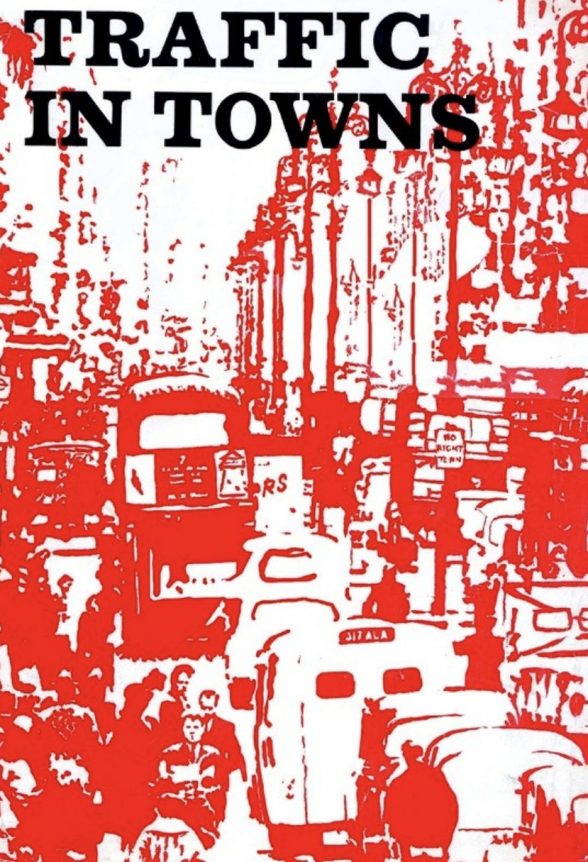This website uses cookies
This website uses cookies to enable it to function properly and to analyse how the website is used. Please click 'Close' to accept and continue using the website.


Classic Book: Traffic in Towns (1963)
Colin Buchanan
Reviewed by Otto Saumarez Smith
1963

It was perhaps because of one of its illustrations that Colin Buchanan’s 1963 government report was so widely reported – everywhere from the Daily Worker to The Tablet – and reprinted as a mass-market Penguin paperback. The illustrator Kenneth Browne gave form to the book’s most extreme case study, reimagining London’s Fitzrovia as a layer-cake of walkways and decks, with a dizzying armature of multi-lane motorways and service roads. It would have involved an eye-watering amount of destruction, including much of Richard Adam’s Fitzroy Square. Ernest Marples, the Minister of Transport, hailed it as a call for radical urban renewal: ‘It is fundamental to the whole report that it accepts the motor vehicle as a brilliant and beneficial invention. It is in no sense restricting the motor car… We have to face the fact, whether we like it or not, that we have built our towns in entirely the wrong way for motor traffic. We want an entirely different type of town.’
Traffic in Towns is a much subtler and more nuanced text than is suggested by Browne’s headline-grabbing image. It has been widely misinterpreted as offering, as Buchanan himself wryly put it in 1983, ‘a blueprint for the total reconstruction of towns and cities with traffic circulation at different levels, costing a fortune and not very nice to look at into the bargain.’ In fact, it argued that if a large proportion of traffic was to be accommodated in large cities without totally destroying their amenity value, there would need to be massive physical reconstruction, and if the community was unable or unwilling to pay for this, then restriction of traffic would be necessary.
Buchanan saw that urban planning was the only way to avoid future chaos: ‘We have taken a bull into the china shop and to that old problem there are only two answers – shoot the bull, or, more creatively, build a new china shop specifically designed for bulls.’ The report presented various options for traffic restriction or total rebuilding, without definitively advocating either. Within the context of the report the Fitzrovia scheme was something of a reductio ad absurdum, showing the impossibility of making cities fully subservient to the car. At the core of Buchanan’s approach was segregation of uses, to be achieved through pedestrian precincts (or ‘environmental areas’) or new forms of multi-level ‘traffic architecture’ placing pedestrians on a deck above motor traffic.
The influence of Traffic in Towns reverberated throughout the sixties. It spurred radical reconstruction, leading to the rebuilding of many city centres with an ill-loved assortment of gimcrack shopping centres, tacky pedestrian precincts, grim underpasses, budget mega-structures and gargantuan car parks. But it was also cited by those who sought to restrict car usage – in 1963 deaths from car accidents overtook those from TB, and many compared Buchanan with Edwin Chadwick’s Report on the Sanitary Conditions of the Labouring Population (1842) as a first attempt to grapple with a critical social problem. Today, we still haven’t figured out what to do with the bulls, and Buchanan’s diagnosis remains a powerful one.
We are still populating our book review section. You will be able to search by book name, author or date of publication.

Become a C20 member today and help save our modern design heritage.